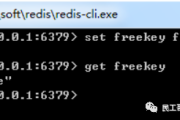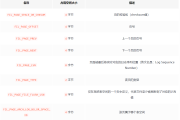Python爬虫工具BeautifulSoup使用详解
1.模块介绍
Beautiful Soup 是一个可以从 HTML 或 XML 文件中提取数据的 Python 库。它可以使用您喜欢的文档方法实现标准的文档浏览、搜索和编辑。美味的汤会帮助您节省工作时间。
2。如何使用
1.安装 beautifulsoup
pip install beautifulsoup42。输入模式
from bs4 import beautifulsoup3。选择解析器解析指定内容
soup=beautifulsoup(解析内容,解析器)常用:html。 parser, lxml, xml, html5lib
有时你需要安装一个解析器:比如 pip3 install lxml
BeautifulSoup 默认支持 Python 的标准 HTML 站点,但它也支持第三方库: Parser
BeautifulSoup(markup,❀❀ 标准库 -Python 的标准平均输出速度
对强大文档的容错
BeautifulSoupBeautifulSoup BeautifulSoup(标签,“xml”)
唯一支持XML的解析器
方法一:获取单个属性soup.find_all('div',id="even") # 获取所有id=even属性的div标签soup.find_all('div',attrs={'id':"even"}) # 效果同上方法二:soup.find_all('div',id="even",class_="square") # 获取所有id=even并且class=square属性的div标签soup.find_all('div',attrs={"id":"even","class":"square"}) # 效果同上
p(mark , "html5lib ")
打开浏览器模式下的文档
创建HTML5格式的文档
不返回外部。一些简单的搜索结构化数据格式
#获取标签,简单来说就是HTML中的标签
#获取Tag,通俗点就是HTML中的一个个标签soup.title # 获取整个title标签字段:<title>The Dormouse's story</title>soup.title.name # 获取title标签名称 :titlesoup.title.parent.name # 获取 title 的父级标签名称:headsoup.p # 获取第一个p标签字段:<p class="title"><b>The Dormouse's story</b></p>soup.p['class'] # 获取第一个p中class属性值:titlesoup.p.get('class') # 等价于上面soup.a # 获取第一个a标签字段soup.find_all('a') # 获取所有a标签字段soup.find(id="link3") # 获取属性id值为link3的字段soup.a['class'] = "newClass" # 可以对这些属性和内容等等进行修改del bs.a['class'] # 还可以对这个属性进行删除soup.find('a').get('id') # 获取class值为story的a标签中id属性的值soup.title.string # 获取title标签的值 :The Dormouse's story
3.特殊用途
1.获得具有特定属性的品牌
方法一:获取单个属性soup.find_all('div',id="even") # 获取所有id=even属性的div标签soup.find_all('div',attrs={'id':"even"}) # 效果同上方法二:soup.find_all('div',id="even",class_="square") # 获取所有id=even并且class=square属性的div标签soup.find_all('div',attrs={"id":"even","class":"square"}) # 效果同上
2。取符号的值?该方法构建 Beautiful Soup 文档树并将其输出为 Unicode 编码。每个 XML/HTML 标签都有自己的行 markup = '<a href="http://example.com/" rel="external nofollow" rel="external nofollow" rel="external nofollow" rel="external nofollow" >I linked to <i>example.com</i></a>'soup = BeautifulSoup(markup)soup.prettify()# '<html>\n <head>\n </head>\n <body>\n <a href="http://example.com/" rel="external nofollow" rel="external nofollow" rel="external nofollow" rel="external nofollow" >\n...'print(soup.prettify())# <html># <head># </head># <body># <a href="http://example.com/" rel="external nofollow" rel="external nofollow" rel="external nofollow" rel="external nofollow" ># I linked to# <i># example.com# </i># </a># </body># </html>
markup = '<a href="http://example.com/" rel="external nofollow" rel="external nofollow" rel="external nofollow" rel="external nofollow" >I linked to <i>example.com</i></a>'soup = BeautifulSoup(markup)soup.prettify()# '<html>\n <head>\n </head>\n <body>\n <a href="http://example.com/" rel="external nofollow" rel="external nofollow" rel="external nofollow" rel="external nofollow" >\n...'print(soup.prettify())# <html># <head># </head># <body># <a href="http://example.com/" rel="external nofollow" rel="external nofollow" rel="external nofollow" rel="external nofollow" ># I linked to# <i># example.com# </i># </a># </body># </html>2。 get_text()
如果你只是想获取要获取标签的文本内容,可以调用 get_text() 方法。此方法接收标签内所有文本的内容,包括父标签的内容,并以 Unicode 字符串形式返回结果:
markup = '<a href="http://example.com/" rel="external nofollow" rel="external nofollow" rel="external nofollow" rel="external nofollow" >\nI linked to <i>example.com</i>\n</a>'soup = BeautifulSoup(markup)soup.get_text()'\nI linked to example.com\n'soup.i.get_text()'example.com'
参考文档
https://beautifulsoup.readthedocs.io/zh_CN/v4.4.0/版权声明
本文仅代表作者观点,不代表Code前端网立场。
本文系作者Code前端网发表,如需转载,请注明页面地址。
 code前端网
code前端网



